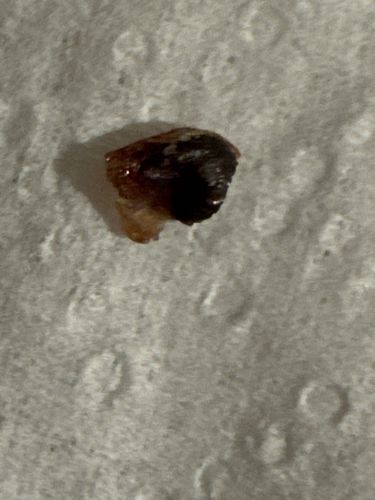Cockroach (Ootheca)
Scientific Name: Various species, common examples include Blattella germanica (German cockroach) or Periplaneta americana (American cockroach) (the image appears to be an ootheca, or egg casing, of a cockroach)
Order & Family: Blattodea (Order), Various families including Blattidae, Ectobiidae, Blaberidae
Size: Oothecae (egg cases) vary in size depending on the species, typically ranging from 3 mm to 12 mm in length. Adult cockroaches range from 1.5 cm to 5 cm (0.6 to 2 inches) depending on the species.

Natural Habitat
Cockroaches thrive in warm, humid, and dark environments, often found in human dwellings, particularly kitchens, bathrooms, basements, and drains. They can also be found outdoors in leaf litter, under rocks, and in rotting wood.
Diet & Feeding
Cockroaches are omnivorous scavengers. They will eat almost anything, including food scraps, paper, fabric, dead skin, hair, and even glue.
Behavior Patterns
Cockroaches are primarily nocturnal and gregarious. They are known for their rapid reproduction. Their oothecae (egg cases) contain multiple eggs and are often glued to surfaces or dropped in concealed locations. Nymphs hatch from these cases and undergo several molts before reaching adulthood.
Risks & Benefits
Risks: Cockroaches are considered pests. They can contaminate food, spread bacteria (like Salmonella, E. coli), and trigger allergies and asthma in sensitive individuals due to their shed skins and droppings. They bite humans on rare occasions, usually when populations are very high and food sources are scarce. Benefits: In certain ecosystems, cockroaches play a role as decomposers, breaking down organic matter.
Identified on: 9/4/2025